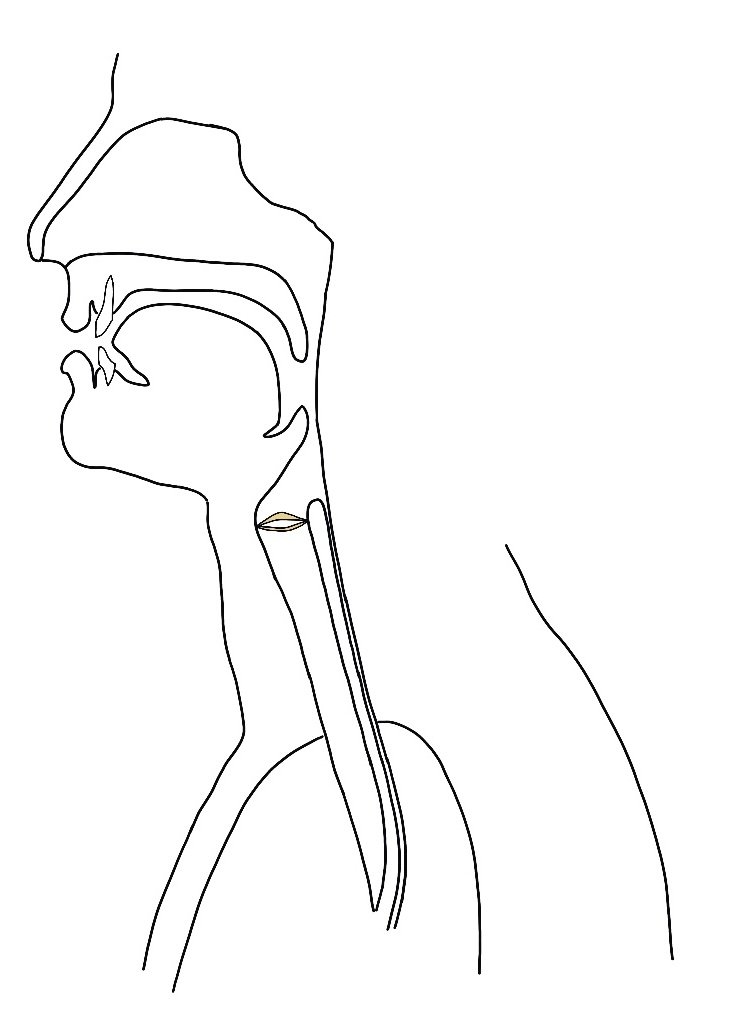The Glottal Stop
Today, we’re going to discuss ANOTHER sound that we make that doesn’t have its own letter. It’s called a glottal stop and is a little unorthodox when compared with our other previously discussed sounds.
THE SOUND
The voiceless glottal stop is a type of stop but the place of articulation is glottal. This means the important area of focus is at the vocal cords. There is NO airflow past the vocal cords cause they’re closed shut and there is no vibration of the vocal cords, also because they are closed shut.
This sound is represented but a symbol that looks like a question mark. Except it’s one continuous line.
The sound appears in speech but is almost like an unrepresented sound.
Take a look.
uh-oh & button
Can you hear the sound?
It’s a bit abstract to think about but the glottal stop is the sound you get from the stoppage of sound.
Uh__oh and bu__on.
That stoppage of sound is created when the vocal cords close together and acts as a physical wall stopping the sound.
It doesn’t matter what shape your mouth or tongue or lips are in. The sound is stopped further down before we even get to the mouth, lip or tongue.
The sound itself and overall control of vocal cord closure is important; however, I personally feel like it is a secondary skill sound that is a ‘good to have’ not so much a ‘need to have’ skill. So don’t stress if you don’t fully understand all the use cases or by the end of this you still doubt whether you fully mastered the sound.
(That’s my personal opinion at least).
In English, we use the glottal stop skill in combination with other stops.
In some languages, this is a separate consonant sound (Ever wonder why you see a question mark looking symbol on BC Squamish signs?), but in English, we often use it with d, t, k, g, b or p when one of those sounds happens at the end of a word or syllable. We close the vocal cords very quickly and make the air stop for just a moment. This is considered a non-aspirated plosive or stop sound.
Ever notice how some people will say:
STOP-uh versus STOP….
In the second option “STOP….” we don’t let the air escape as an audible puff. This can be completed by not letting the air escape out of the mouth but also by not letting the air escape out of the throat. The option via the throat is through glottal closure aka your vocal cords closing shut.
Verbal cues
The sound is made by a closure of the vocal cords.
The easiest way to imagine it is to hold your breath. Your vocal cords will close up when you hold your breath and this is teh exact feeling you need to make this sound.
Another good image to have in mind is the feeling of getting ready to pick up something heavy, like a huge boulder. You naturally brace yourself to pick up said boulder and will tighten up.
Closest image to lifting heavy boulder as I could find on stock photos
Visual Cues
Visually, there won’t be any clues because all the work is done on the inside of your throat for this one.
Tactile Cues
Practice paying extra attention to what is happening in your throat when you hold your breath.
THE SOUND IN DIFFERENT POSITIONS.
Here's are some examples of words the sound can be in in different positions
MIDDLE OF THE WORD - button, cotton, kitten, sentence, forgotten
END OF THE WORD - “get”, “back”
*NOTE - Notice how many of these examples occur in t + a vowel + n. We don't say the vowel at all, so we say the t + n. At the end of the word, you can simultaneously stop airflow at the vocal cords and at the place of articulation for the T-sound and the K-sound respectively.
WHY IT MAY BE HARD
This sound can be hard because there’s a grey zone to this sound. I can say the word ‘button’ 3 different ways. One with a true T-sound. One with a flap T-sound. One with a glottal stop sound.
All are correct and all are possible. The trick is knowing that different regions of English speakers will prefer or have a favourite pronunciation.
WHAT TO DO
So let's say you do have trouble with your glottal stop sound. What can you do about it.
Well, here are the features of the sound.
Place of articulation - At the level of the vocal cords (aka the glottis)
Manner of articulation - Plosive/Stop. Airflow is cut off or completely stopped.
Voiced or unvoiced - The sound is unvoiced or voiceless. This is because the vocal cords do not vibrate. In this specific case, the vocal cords are actively closed shut so of course they don’t vibrate.
If you want to practice feeling this sound and understanding it better, the main thing you can practice is learning how to close your throat on command. Feeling the throat close when you are holding your breath or about to pick up a heavy boulder.
I’m breaking down every single sound down for you so that you can learn how to produce each sound in English accurately. Sometimes, we’ll have easier sounds and sometimes we’ll have harder sounds.
If you’ve grasped this sound, then great! But if you’ve got a tip that might work for others, or you took a while to produce this sound correct but something clicked for you, let me know down below in the comments. My goal is to have a community know what to do when they’re stuck!



